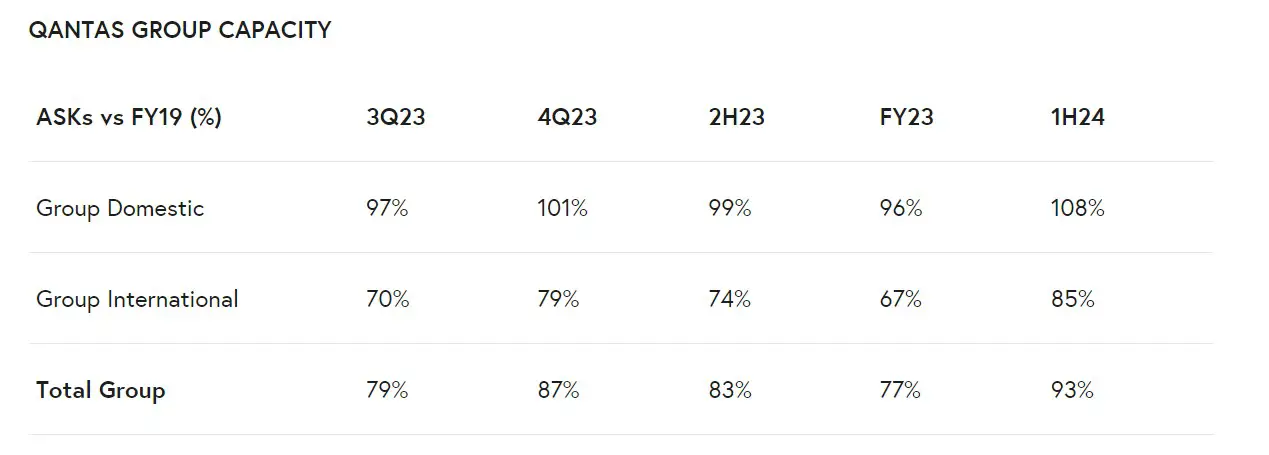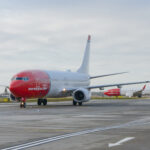Qantas Group is expected to report an FY23 Underlying Profit Before Tax between $2,425 million and $2,475 million, riding on the back of a continued surge in travel demand and successful completion of its three-year recovery program.
In a major boost to operations, flying activity experienced a sharp increase in the second half due to the arrival of new aircraft, widebody jets returning from long-term storage, and notable improvements in operational reliability. Consequently, the Group’s Domestic capacity is projected to surpass pre-COVID levels by 4% by the end of 2H23. This surge is primarily due to a remarkable rise in flight operations on key routes connecting Melbourne, Sydney, and Brisbane.
Internationally, the Group’s capacity is anticipated to rebound to over 80% of pre-COVID levels by the end of 2H23. Although some supply issues caused minor delays in the first half of the year, such as a three-month delay in restarting the Melbourne-Hong Kong route due to a scarcity of ground handlers, the group is optimistic about growth.
Qantas further announced a plan to ramp up flying operations from October 2023, aiming to restore Group International capacity to approximately 100% of pre-COVID levels by March 2024. Forward booking trends substantiate this projection, revealing strong continuing travel demand into FY24, with revenue intakes at 118% and 123% of pre-COVID levels for Group Domestic and International, respectively.
Commenting on the projections, Qantas Group CEO, Alan Joyce, said, «We’re seeing the broad trends we expected as the industry recovers and trading conditions remain very positive. More parts of the aviation supply chain are returning to normal, which means we’re able to put some of the spare aircraft and crew we kept in reserve back in the schedule. That’s combining with lower fuel prices to help put downward pressure on fares, which is good news for customers.»
See also: Qantas Boosts Its Global Network: Adds Flights, Aircraft, and New Routes
Adding to these sentiments, Joyce explained that the industry still remains capacity constrained. However, he pointed out that the strong travel category alongside an imbalance between supply and demand, especially in international flying, is likely to persist. «We’re on track to take delivery of another eight new aircraft before the end of this calendar year and we’re working hard to bring the last of our stored aircraft through heavy maintenance so we can get them back in the air,” Joyce stated.
The group has also made strides in finalizing 38 enterprise agreements under its revised wage policy, implying that approximately 80% of its total workforce is now eligible for a recovery boost.
Lastly, buoyed by the strong balance sheet and positive outlook, the Board increased the existing on-market buy-back by up to $100 million. Moreover, the group anticipates its net debt to be between $2,700 million and $2,900 million at 30 June 2023, substantially below its revised target range, further strengthening its financial framework.















